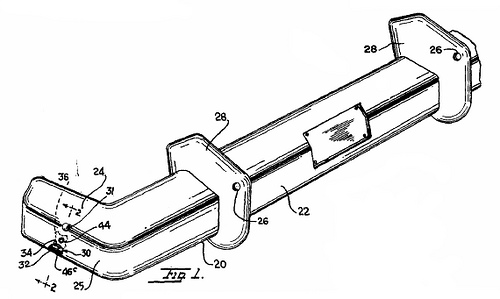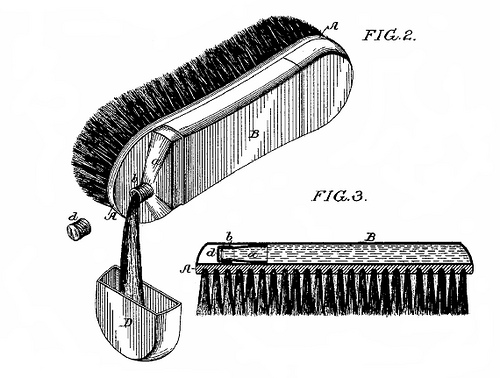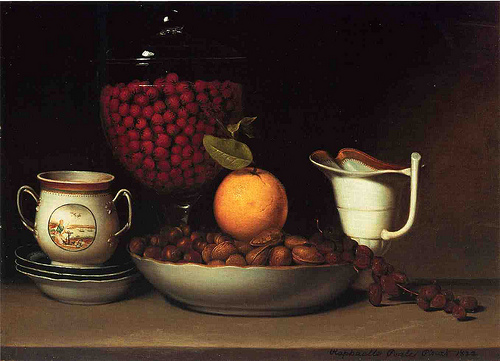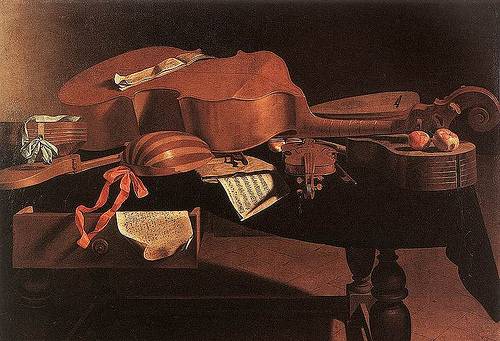
After a series of poor performances of her Broadway show The Exciters, Heywood Broun told Tallulah Bankhead:
“Don’t look now, but your show’s slipping.”

After a series of poor performances of her Broadway show The Exciters, Heywood Broun told Tallulah Bankhead:
“Don’t look now, but your show’s slipping.”
Chambers’s Journal (1872) reports the result of an unfortunate printer’s error in which two columns of type in a local newspaper were mixed together:
Several of the Rev. Dr Mudge’s friends called upon him yesterday, and after a brief conversation, the unsuspicious pig was seized by the hind-legs and slid along a beam until he reached the hot-water tank. His friends explained the object of their visit, and presented him with a very handsome gold-headed butcher, who grabbed him by the tail, swung him round, slit his throat from ear to ear, and in less than a minute, the carcass was in the water. Thereupon, he came forward, and said that there were times when the feelings overpowered one, and for that reason he would not attempt to do more than thank those around him for the manner in which such a huge animal was cut into fragments was simply astonishing. The doctor concluded his remarks, when the machine seized him, and in less time than it takes to write it, the pig was cut into fragments, and worked up into delicious sausages. The occasion will long be remembered by the doctor’s friends as one of the most delightful of their lives. The best pieces can be procured for tenpence a pound; and we are sure that those who have sat so long under his ministry will rejoice that he has been treated so handsomely!
“We cannot vouch for the genuineness of the foregoing; but whether it be genuine or manufactured, it would be difficult to find a more complete specimen of a typographical mixture.”

Above: a combination car bumper and bottle opener, patented by Rafael Bonnelly in 1964.
Below: a combination clothes brush and flask, patented by Thomas Helm in 1893.
Maybe you do have a drinking problem.

Dorothy Parker named her Boston terrier Woodrow Wilson “because he was full of shit.”

The Ohio Law Journal thus explains how to draw a deed of gift of an orange:–
‘… If a man would, according to law, give to another an orange, instead of saying, “I give you that orange,” which one would think would be what is called in legal phraseology, “an absolute conveyance of all right and title therein,” the phrase would run thus: “I give you all and singular my estate and interest, right, title and claim, and advantage of and in that orange, with all its rind, skin, juice, pulp and pips, and all right and advantage therein, with full power to bite, cut, suck, and otherwise eat the same, or give the same away, as fully and effectually as I, said A.B., am now entitled to bite, cut, suck, or otherwise eat the same orange, or give the same away with or without its rind, juice, pulp and pips, anything heretofore or hereafter, or in other deed or deeds, instrument or instruments, of what nature or kind soever, to the contrary in any wise notwithstanding.”‘
— Journal of Jurisprudence, April 1885
The digits 1-9 can work some impressive tricks:


The first formula, found by B. Ziv in 2004, produces the first 10 digits of pi.
The second, astonishingly, reproduces e to 18,457,734,525,360,901,453,873,570 decimal places. It was discovered by Richard Sabey, also in 2004.
(Thanks, Robin.)

“A man wrote to say that he accepted nothing but Solipsism, and added that he had often wondered it was not a more common philosophy. Now Solipsism simply means that a man believes in his own existence, but not in anybody or anything else. And it never struck this simple sophist, that if his philosophy was true, there obviously were no other philosophers to profess it.”
— G.K. Chesterton, St. Thomas Aquinas, 1933
From a 19th-century British broadside:
Madam,
The love and tenderness I have hitherto expressed to
you is false, and I now feel that my indifference towards
you increases every day, and the more I see you the more
you appear ridiculous in my eyes, and contemptible–
I feel inclined and in every respect disposed and determined
to hate you. Believe me I never had any inclination
to offer you my hand. Our last conversation I assure you
left a tedious and wretched insipidity which has not
possessed me with an exalted opinion of your character,
your inconstant temper would make me miserable,
and if ever we are united, I shall experience nothing but
the hatred of my parents, added to everlasting dis-
pleasure in living with you. I have a true heart to bestow,
but however I do not wish you for a moment to think
it is in your service, as I could not give it to one more
inconstant and capricious than yourself, and one less
capable to do honour to my choice, and my family.
You, Madam, I beg and desire will be persuaded that I
think seriously, and you will do me a great favour to
avoid me. I shall excuse you taking the trouble to
give me an answer to this, as your letters are full of
nonsense and impertinence, and have not a shadow of
wit and good sense. Adieu, and believe me truly, I am
so averse to you, that it is impossible I should ever be,
Madam, your Affectionate Servant and Lover, R.G.
“By reading every other line of the above letter the true meaning will be found out.”

A young man, poorly clothed, presented himself before a dealer in curiosities. ‘Sir,’ said he, showing a violin which he carried, ‘I am a musical artist; this is the season of balls and soirées; I have just had a long illness which has exhausted my purse; my only black coat is in pawn, I shall be much obliged if you will lend me ten francs to redeem it. I will leave as security one of the violins you see, for I have two; it is an excellent instrument. I shall return for it as soon as, thanks to my coat, I shall have earned enough money for the purpose.’ The young man had such an honest bearing that the dealer lent him ten francs and kept the violin, which he hung up in the shop. The next day but one, a gentleman, well-dressed, wearing at his buttonhole the ribbon of the Legion of Honor, was choosing from the dealer’s stock of goods some shell-work. Seeing the violin, he took it up, examining it narrowly. ‘What is the price of that instrument?’ said he. ‘It is not mine,’ replied the shopkeeper; and he related how he came to possess it. ‘This violin,’ continued the unknown, ‘is worth money, it is a Cremona. Perhaps its owner is ignorant of its value. If he returns, offer him two hundred francs for it.’ Then handing fifty francs to the shopman, the unknown said on taking his leave, ‘You will keep that for yourself if the affair succeeds; I will return in a few days.’ Two days after, the young man reappeared, bringing the ten francs to redeem his violin, for which the dealer offered him two hundred. After some hesitation, he agreed. At the end of a week, the dealer, not having seen the decorated gentleman, became suspicious; he carried the violin to an instrument-maker, who offered him three francs for it.
— Thomas Brackett Reed et al., Modern Eloquence, 1900
galericulate
adj. covered by a hat
See whelve.